ISO 14001 and Organic Waste
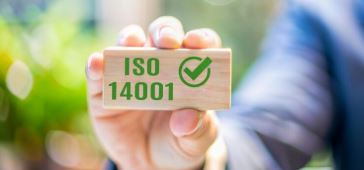
ISO 14001 and Organic Waste: Complete Environmental Management Guide for European Companies 2025
Environmental management of organic waste under the ISO 14001:2015 standard has become a strategic imperative for European companies, offering 10-30% cost reductions and substantial improvements in market access. With the entry into force of mandatory biowaste collection throughout the EU since January 2024 and the upcoming ISO 14001:2025 revision, organizations must adopt systematic approaches that integrate regulatory compliance, operational optimization and digital transformation.
This regulatory evolution, combined with growing stakeholder pressures and circular economy opportunities, is redefining organic waste management from a compliance obligation to a strategic competitive advantage. Certified companies report 15-31% improvements in energy efficiency and preferential access to green public procurement contracts, while building operational resilience against increasingly stringent regulations.
Brewers Spent Grain
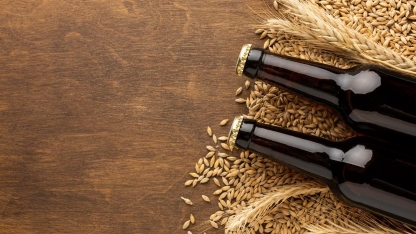
Brewers Spent Grain: Economic and Circular Opportunity for the Spanish Agri-Food Sector
Spain generates 800,000 tonnes of brewers spent grain annually, a by-product with multiple profitable applications that is evolving from simple animal feed to an ingredient for human consumption, bioenergy and biomaterials. As the second largest beer producer in Europe after Germany, the country has a constant flow of this underutilized resource that can generate significant economic value. The Spanish brewing sector contributes €17.2 billion to national GDP and its commitment to the circular economy is transforming BSG into a strategic asset for breweries, livestock farmers and valorization companies.
Valorization of Slurry and Manure in Europe

Complete Guide 2025: Pig Slurry and Manure Valorization in Europe
The European livestock waste valorization sector is experiencing an unprecedented transformation driven by revolutionary regulatory changes. EU Regulation 2024/1682 on processed manure opens new cross-border commercial opportunities while growing restrictions on direct application drive the adoption of advanced valorization technologies.
The convergence of 2030 climate objectives, agricultural digitization, and stricter regulations creates a unique scenario where technical valorization becomes an economic imperative. According to official European sources, the EU generates annually more than 1.4 billion tons of manure, of which more than 90% is applied directly to soil, evidencing the exponential growth potential in advanced processing technologies.
South African Livestock Waste

South African Livestock Waste: Valorization Opportunities for Manure, Slurry and Poultry Litter 2025
South Africa presents exceptional opportunities for livestock waste valorization, with a potential of 3 million tons of manure available annually and only 25% currently utilized as fertilizer. The South African market combines a robust livestock industry valued at R152 billion ($8.75 billion USD) with favorable regulatory frameworks and growing demand for sustainable alternatives to synthetic fertilizers, whose prices have increased 41% on average between 2021-2022.
The South African poultry industry leads production with 170 million chickens generating approximately 750,000 tons of poultry litter annually, followed by the bovine sector with 12.3 million head producing close to 1.8 million tons of cattle manure per year. This abundance of organic matter coincides with a compost market reaching prices of R900-1,200 per cubic meter and a biogas sector with potential for 4,000 MW of installed capacity, equivalent to two nuclear power plants.
Subsidies and grants for organic waste in 2025
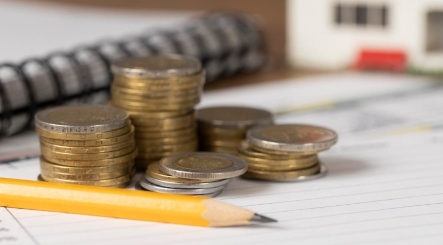
Subsidies and grants for organic waste in 2025: Complete guide for Spain and Europe
2025 marks a decisive moment for financing organic waste projects in Spain and Europe, with more than 8.5 billion euros available between European and national programs. New circular economy regulations, the European Green Deal and post-COVID recovery funds have created an unprecedented financing ecosystem for companies, waste managers and farmers seeking to develop organic waste valorization projects.
The regulatory context has undergone fundamental changes: the European directive requires Member States to separately collect bio-waste before the end of 2023, while Spain must achieve 65% recycling of municipal waste by 2035. These objectives, combined with Next Generation EU funds and national bioeconomy strategies, make 2025 the key year to access organic waste subsidies 2025 and position composting, biogas and biofertilizer projects in the market.
How Organic Waste Legislation Affects Businesses

How Organic Waste Legislation Affects Businesses: Europe 2025 Complete Guide
Across Europe, organic waste legislation for businesses has become a strategic lever for competitiveness. It’s not only about avoiding fines: the framework in force up to April 2025 requires companies to separate, track, and valorize biowaste, while opening avenues for efficiency, savings, and new revenue. This guide—designed for executive teams and sustainability leads—summarizes what matters and brings it down to earth in operations, purchasing, packaging, audit, and reporting.
We focus on the Waste Framework Directive and its revisions, the new Packaging Regulation (PPWR), IED 2.0, the 2030 food-waste reduction targets, and the implications by company size and sector. You’ll find real cases and official links, plus a practical look at digital tools that streamline legal compliance for organic waste with solid traceability.
Agricultural By-products Valorization Europe

Agricultural By-products Europe 2025: Complete Guide to Commercial Opportunities and Valorization
The European market for agricultural by-products europe represents an extraordinary economic opportunity valued at €21.79 billion in 2024, with projections to reach €38.86 billion by 2032. This 7.5% annual CAGR expansion is driven by stricter regulatory frameworks, technological advances in biorefineries, and growing demand for circular economy solutions that transform waste into high-value resources.
The agricultural waste valorization has evolved from simple waste management to a strategic sector spanning from advanced biofuel production to specialized biochemicals, with over 15,000 agro-industrial biogas plants operational in the EU and a theoretical potential of 26 billion m³ of biomethane. Leading countries have demonstrated profitability of 15-25% in established technologies, while optimized projects achieve ROI exceeding 600%, positioning Europe as the global epicenter of innovation in this sector.
Organic Byproducts and Waste in Dairy and Meat Companies
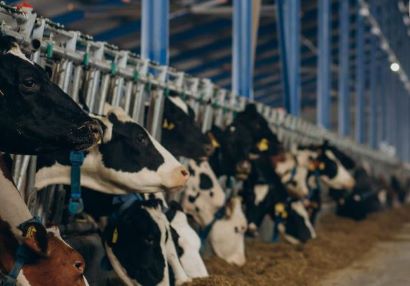
Organic Byproducts and Waste in Dairy and Meat Companies: Legislation and Solutions Spain-Europe 2025
Spanish dairy and meat companies face an increasingly complex legislative landscape in managing organic byproducts, with current regulations imposing fines that can reach €600,000 for serious violations. Compliance with the SANDACH Regulation and the Waste Framework Directive represents not only a legal obligation but also a business opportunity that can transform waste management costs into additional revenue sources for SMEs in the sector.
The current regulations under Royal Decree 1528/2012 establish mandatory documentation systems and traceability requirements that particularly affect small dairies, local slaughterhouses, and processing companies. While large corporations have specialized departments, SMEs must navigate this complex regulatory framework with limited resources, facing compliance costs representing between 10-15% of their initial startup budget.
Olive Pomace and Alperujo
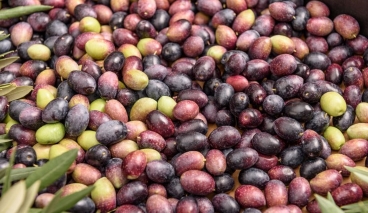
Olive Pomace and Alperujo: Complete Guide on Valorization, Prices and Market Opportunities
Olive pomace and alperujo represent the main by-products of the Spanish olive oil industry, generating approximately 4 million tonnes of material annually that has evolved from being considered a problematic waste to becoming a high-value resource for the circular economy. Spain, as the world's leading olive oil producer with approximately 50% of global production and a forecast of 1.26 million tonnes in the 2024/25 season, faces both the challenge and opportunity of efficiently managing these by-products generated during the campaign months between October and March.
The technological transformation of the olive oil sector, especially the widespread adoption of two-phase extraction systems in over 90% of Spanish olive mills, has significantly modified the characteristics and volume of alperujo generated. This material, rich in organic matter, residual oil and bioactive compounds, offers multiple valorization pathways ranging from energy production through biomass and biogas, to olive pomace oil extraction, composting for agricultural use, and obtaining high-value compounds such as polyphenols and antioxidants. The alperujo market shows marked seasonality, with significant price variations depending on fat content, moisture, geographical location and energy demand, making it a key element for the economic sustainability of olive mills and valorization companies.
Grape Pomace, Wine Lees and Stems
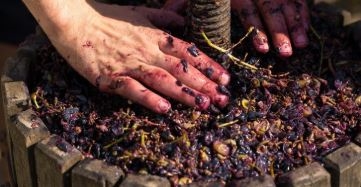
Wine By-Products in Spain: Complete Guide on Grape Pomace, Wine Lees and Stems - Prices, Applications and Valorization
Spain maintains its position as a world reference in the wine sector, with a wine grape growing area exceeding 900,000 hectares, consolidating itself as the country with the largest vineyard area on the planet. This privileged position generates not only recognized quality wine, but also significant quantities of by-products derived from the winemaking process. With an annual wine production ranging between 35 and 40 million hectoliters depending on harvests, the Spanish sector generates approximately between 2 and 3 million tonnes annually of by-products, mainly grape pomace, wine lees and stems, whose proper management and valorization represents both an environmental challenge and an important economic opportunity.
The transformation of these by-products into valuable resources has evolved significantly in recent years, driven by the principles of circular economy and sustainability. From distillation to obtain alcohols and spirits to the extraction of high-value bioactive compounds such as polyphenols, tartaric acid and grape seed oil, the comprehensive use of wine by-products has become a strategic priority for wineries, cooperatives and valorization companies. This article analyzes in depth the characteristics, applications and market of the main wine by-products, providing updated information on prices, applicable regulations and business opportunities in this expanding sector.

